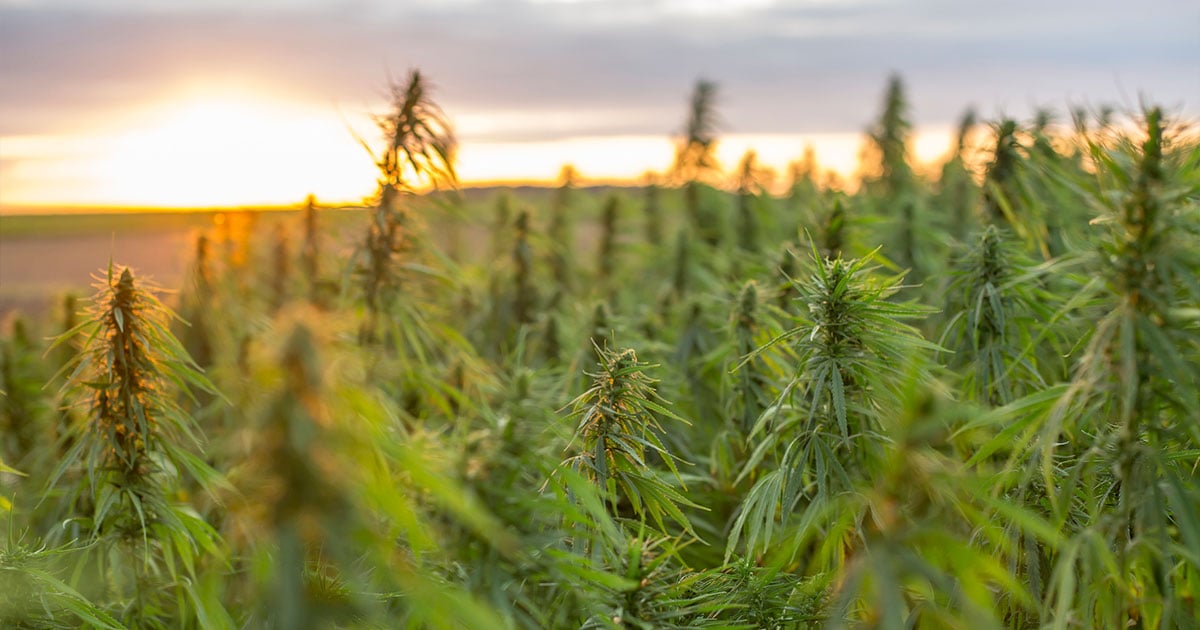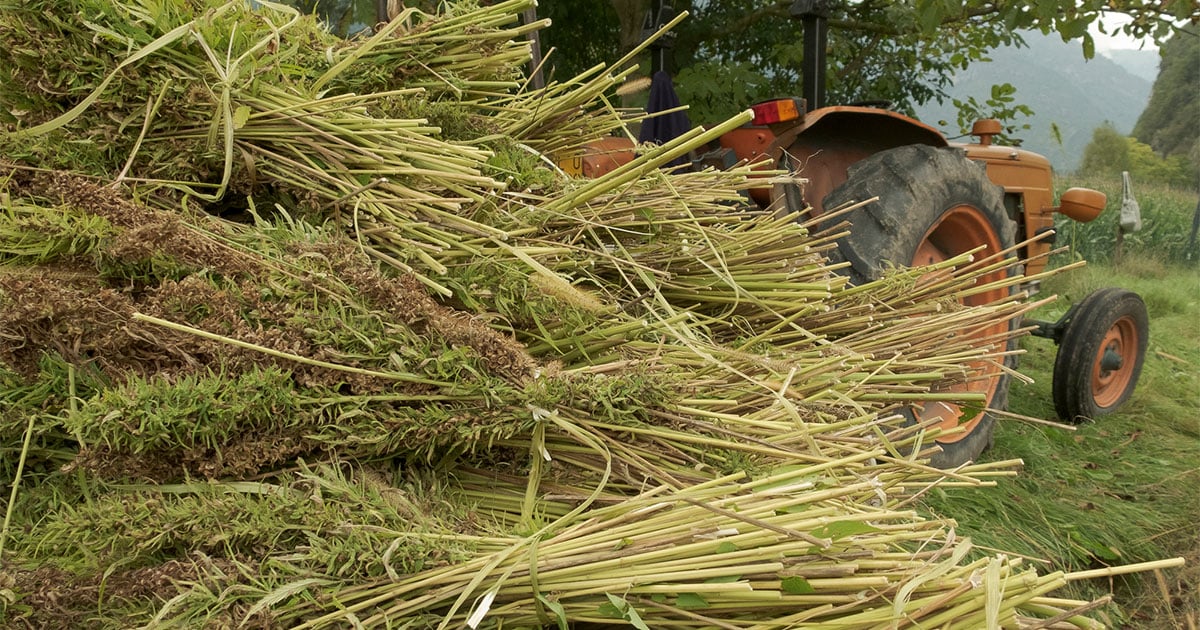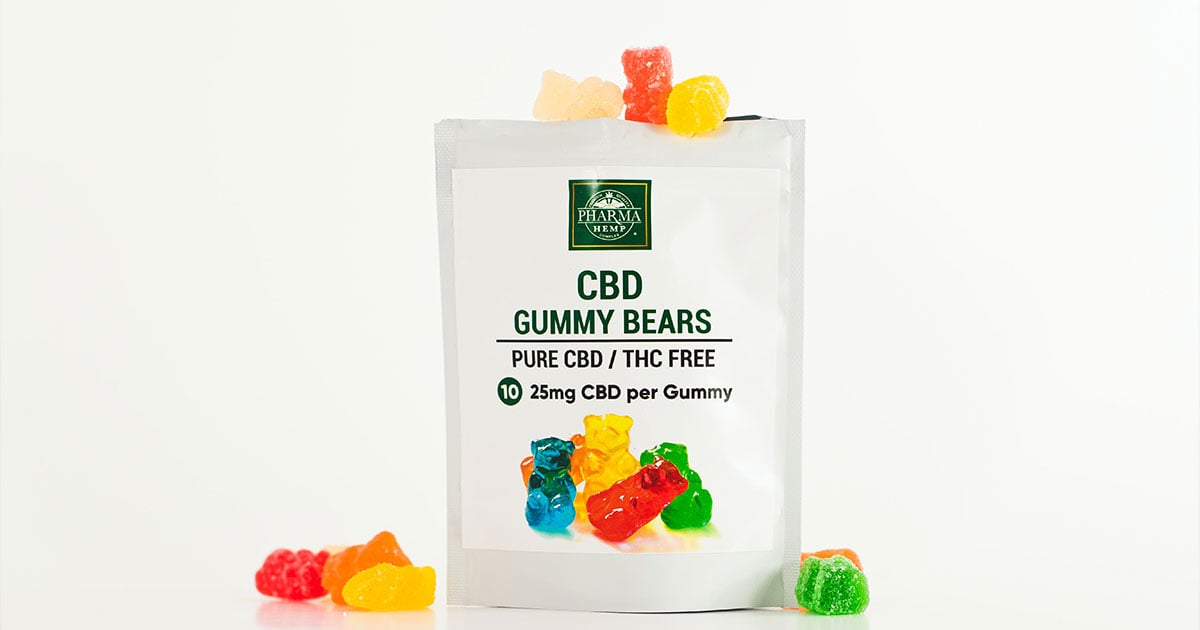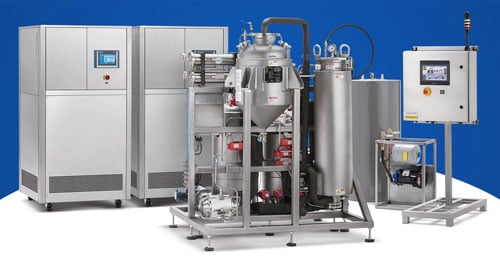
Tetrahydrocannabinol (THC), once the darling of the industry, seems now to be playing second fiddle to its counterpart, cannabidiol (CBD). THC-free products are now all the rage in the wellness and pharmaceutical space due to their powerful therapeutic effects without the intoxicating experience.
For hemp producers, growing hemp that contains less than 0.3% THC is a tall but doable order with the right genetics and cultivation methods. If a farmer is unable to produce compliant cannabinoid concentrations, it can result in a loss of crops and, ultimately, a lower bottom line.
For hemp processors, producing THC-free extracts with non-detectable levels of the cannabinoid requires investment in high-tech and cost-effective THC remediation technology and skilled technicians to achieve a low loss rate at scale.
What Is THC Remediation?
In an effort to remain compliant with federal and state regulations and satisfy consumer demand, hemp producers have turned to advanced methods to purify their hemp extracts.
THC remediation refers to the process of removing THC from hemp-derived extracts. THC remediation methods include dilution and chromatography techniques. Essentially, these remediation methods can yield up to 99% CBD concentrations.
Why THC Remediation Is So Important in the Cannabis Industry

After the 2018 Farm Bill legalized industrial hemp production in the United States, many farmers jumped on the hemp bandwagon seeking to enter the lucrative, exciting, and fast-growing CBD market.
The bill effectively removed hemp from the definition of cannabis in the Controlled Substances Act. Essentially, it is no longer a controlled substance like marijuana.
Under the bill, hemp is defined as any part of the plant and all derivatives with a THC concentration of not more than 0.3% on a dry weight basis. Due to this change, hemp producers and processors must ensure their products contain less than the federal limit.
In some cases, due to genetics or the growing environment, farmers can grow “hot hemp,” referring to hemp that has higher THC levels than allowed. If plants are over the limit, they cannot be sold, which can result in a loss of overall income.
In its interim hemp regulations, the USDA required farmers to destroy the plants. In January 2021, they created final rules allowing “common on-farm practices for the disposal of noncompliant plants.”
Common disposal practices include:
- Plowing under non-compliant plants
- Composting into “green manure” for use on the same land
- Tilling
- Disking
- Burial
- Burning
While the rule change decreased the cost of hot hemp disposal by more than 90%, it still means the hemp cannot be used for the creation of hemp extracts such as CBD distillate, CBD isolate, and CBD crude oil.
For hemp processors who want to make CBD products with non-detectable THC levels, THC remediation technology ensures that the hemp extract remains compliant with federal and state laws. In some states, the sale of THC is prohibited.
The remediation process is also an important step in removing THC to meet the increased demand for non-intoxicating cannabis extracts. In some states, CBD sales are restricted to products without any THC.
Some users with safety-sensitive jobs such as police officers, firefighters, and factory workers require cannabis products that won't put them at risk for testing positives for THC. That means THC products or even CBD:THC products are out of the question.
As a growing number of cannabis producers continue to bet big on hemp farming, they will be in dire need of THC remediation when the biomass gets extracted into a crude oil.
Extraction methods cause a spike in THC concentrations compared to its starting plant material that may not be desirable for cannabis producers.
THC Remediation Methods In the CBD Industry
THC remediation of hemp plants can be accomplished in a variety of ways, depending on the processor's preference, budget, equipment, and skill level. Methods of THC removal depend on the chemical content of the starting material and the desired final concentration of cannabinoids.
Since THC and CBD have similar boiling points, it can be challenging to separate CBD and THC from each other.
Here are the most common methods of separating THC from large quantities of hemp extract. All remediation techniques are effective, but differ in terms of price, equipment, and scalability.
Dilution
Dilution is a common and low-tech method of lowering the level of THC in the extract. Dilution can be a cost-effective and straightforward method of THC remediation compared to other high-tech methods.
Processors can use other substances to lower the THC levels within an extract, so the product can be compliant. Common substances used include hemp seed oil or mid-chain triglycerides (MCT) such as palm oil.
One of the downsides of this method is that dilution reduces the overall amount of CBD per volume in the final product.
Crystallization
Crystallization is another popular method of THC remediation since CBD crystallizes easily.
Extraction technicians can activate the acidic compounds such as cannabidiolic acid (CBDA) and tetrahydrocannabinolic acid (THCA) through the decarboxylation (heating) process using a heated solvent. The process converts the acidic forms into their neutral forms (CBD and THC, respectively).
After the decarboxylation process, the active CBD cannabinoid can easily crystallize allowing the filtration of other cannabinoids. Crystallization can also aid in pesticide remediation.
Reverse-Phase Flash Chromatography
Chromatography is a popular way to create THC-free products. Investing in high-tech and expensive chromatography equipment can streamline the extraction and remediation process for faster results at high volumes.
Flash chromatography, in particular, is a common and efficient type of gas chromatography that manufacturers can help with THC remediation.
Flash chromatography uses specialty polymeric resins and high solvent amounts, adding to expenses and storage needs. During the process, operators use a pressurized gas to pump the solvent needed to separate molecules at a fast rate compared to standard column chromatography methods.
Normal flash chromatography is not effective at removing THC. Instead, reverse phase chromatography techniques using water, silica, and ethanol solvents are common in THC remediation.
In this chromatography technique, CBD is removed first by using a specialty filter media in the column that allows it to travel more quickly than THC.
Here is a quick look into how reverse phase chromatography works:
- The extract is pumped into a column featuring stationary phase media.
- As the crude oil passes through the media, the THC and CBD interact differently with it making the CBD move through the media at a quicker rate.
- CBD exits the column before the THC and is collected separately.
- The THC exits the column later and can be destroyed (if necessary).
Flash chromatography can be costly for many processors and require highly skilled lab technicians. For small-scale processors, scaling up to bigger volumes of production can require a high investment. but is one of the most effective ways to remove nearly 100% of the THC.
This chromatography method uses the principles of polarity to separate CBD and THC. These two compounds have different polarities. THC is less polar than CBD.
High-Performance Liquid Chromatography (HPLC)
HPLC is a type of liquid chromatography that uses less solvent and has shorter run times than flash chromatography. HPLC can be the ideal solution for manufacturers looking to scale their operations. HPLC is a common method of testing the potency and purity of cannabis samples.
Centrifugal Partition Chromatography (CPC)
CPC uses standard column chromatography techniques but instead of using a solid phase, uses liquid stationary and mobile phases. Centrifugal force helps the liquid remain in one place, while the other liquid moves through the column.
CounterCurrent Chromatography
Countercurrent chromatography (CCC) is a type of liquid-liquid chromatography technique that uses liquids as its mobile and stationary phase. CCC uses centrifugal force to maintain the liquid’s stationary phase in place.
CCC can reduce the total amount of solvent used since the crude oil can be captured during the stationary phase. This process can also reduce the loss of yield and avoids the need for additional equipment for the stationary phase.
Supercritical Fluid Chromatography
Supercritical fluid chromatography (SFC) can produce great results in THC remediation. Generally, lower solvent amounts are needed compared to conventional systems. However, SFC can also result in large losses of minor cannabinoids and a lower yield of crude oil.
SFC uses a supercritical fluid that is created using a temperature and pressure beyond the fluid’s critical points. A supercritical fluid has a relatively low viscosity and high diffusivity compared to a liquid mobile phase and higher density compared to a gas. All of this allows for the remediation process to occur at lower temperatures.
Molecular Imprinted Polymer (MIPs) Technology
Molecular imprinted polymer technologies use MIP beads with open spaces designed to trap the desired compound alongside food-grade ethanol and water. This nanotechnology can provide a cost-effective way that can rival the results from chromatography.
With MIPs, you can produce high yields. MIP technology enables processors to work with everything from crude oils to isolates and result in a lower loss of yield. In addition, it can reduce the operational costs compared with most chromatography methods.
THC Degradation
For cannabis processors who cannot invest heavily in chromatography equipment to remove THC, there are new THC remediation techniques being developed that use the natural THC degradation process to convert the intoxicating cannabinoids into another valuable one.
A combination of light, heat, and pressure cause the THC compound to age and degrade over time. Exposure to these elements convert THC into cannabinol (CBN), a minor cannabinoid known for its sedative effects.
For some cannabis consumers, CBN can be a potentially therapeutic cannabinoid that can be used for its anti-inflammatory, pain-relieving, neuroprotective, and sleep-inducing effects.
Some processors are experimenting with degradation techniques that involve a chemical conversion using solvent techniques, UV light degradation, and heat oxidation to speed up the natural aging process.
Using these techniques can help create CBD-rich products without THC. During the process, THC can be converted into the relatively non-intoxicating CBN compound. Chemical conversion techniques can make economic sense compared to chromatography; however, the process rarely produces consistent results.
Naturally, the degradation process could take months or years, depending on the exposure to light, heat, and pressure and storage methods. Using these techniques, the process can be sped up for high-volume production.
Degradation techniques can help reduce any problems with yield loss but also cause CBD to degrade, depending on the SOPs. In addition, the degradation process can take a lot longer than chromatography. It is important to compare the cost effectiveness of each.
For large-scale production, chromatography cannot be beat.
Processors must also consider that CBN has its own regulations, which vary by country, compared to other cannabinoids. For instance, the United Kingdom prohibits CBN. When using chemical conversions, you enter a quasi-legal space since THC is illegal and CBN may be considered an illegal “analog” of THC in the U.S.
Handling the Challenges of the Cannabis Industry
In the cannabis industry, THC restrictions vary depending on the applicable regulations. Preparing products with compliant THC concentrations can help companies set their sights on international expansion.
For instance, in the U.S., the Farm Bill set the THC cutoff to 0.3% THC for hemp-derived products. In many European Union (EU) countries, the limit for THC can be as low as 0.05%. In some South American countries, such as Colombia, the limit is 1% THC.
Regulations requiring extremely low THC levels pose a great challenge for processors in the cannabis industry, especially for high-volume production. Companies must consider the one-time and ongoing expenses required for high-tech equipment and technician training.
In addition, processors must consider their state’s unique cannabis transportation laws. In some states, you cannot even ship a hemp extract sample for analytical testing if it contains a THC concentration above the legal limit.
Finally, manufacturers must ensure their remediation efforts do not significantly reduce their yield. In all remediation efforts, there is bound to be some loss. It is up to companies to strike a balance between their expenses and the quality of their remediation.
In terms of cannabis potency, the remediation process can also lead to reducing the average CBD potency. Cannabinoid potency losses are as low as 3%. Generally, losses range between 10% to 25%.
By using the most innovative remediation technology, CBD concentrations can remain about the same without any significant loss during the process.
What Is the Best THC Remediation Method?
Choosing the right THC remediation technique is an important choice that will require considering several factors. Extraction companies must consider the types of products they plan to create.
In addition, they must consider their brand messaging and audience they are appealing to. If they want to choose the right type of THC remediation for the business, they must consider the final product. No one choice is right for everyone.
THC-Free Products

In terms of the final product, THC remediation can enable processors to break into the CBD market by providing consumers with a reliable, effective, and THC-free product.
Here are some of the many CBD products that can be created using THC remediation:
- CBD Isolates: CBD isolates are crystallized forms of the pure cannabinoid containing well over 99.5% CBD. All other cannabinoids, terpenes, and flavonoids have been removed from the extract.
- CBD Distillate: CBD distillate can contain between 80% to 95% or higher CBD levels after the proper THC remediation techniques have been used.
- Crude oil: Broad-spectrum crude oil can contain other cannabinoids and bioactive terpenes. Crude oils can contain between 50% and 75% CBD.
It is important to note the difference between broad-spectrum CBD and full-spectrum CBD. Unlike a broad-spectrum CBD extract, a full-spectrum CBD extract contains low levels of THC (usually below 0.3% on a dry weight basis).
Full-spectrum CBD will not cause a high but can be prohibited in some states and increase the risk of failing a drug test. However, full-spectrum products may provide elevated benefits due to the presence of all cannabinoids.
From the THC-free extracts, CBD manufacturers can create a variety of consumer packaged goods including edibles, tinctures, capsules, topicals, transdermal patches, nano-emulsions, water-soluble powders, and so much more.
THC Remediation at the Source

THC removal has largely been focused on the extraction part of the supply chain. However, producers have been looking for new ways to remove THC from the plant material at the beginning of the production stage.
For example, some cannabis companies are using selective breeding techniques to create hemp cultivars that contain zero THC.
Creating a hemp plant that is free from the intoxicating THC compound enables farmers to grow these THC-free hemp varieties without worrying about growing hot hemp.
Certificate of Analysis
After all the hard work of THC remediation, a Certificate of Analysis (COA) from a third-party lab testing facility can confirm your efforts.
Investing in batch testing before and after the remediation process can give your customers confidence in knowing your CBD products are compliant and have the highest purity and potency.
Crafting a Pure and Compliant CBD Extract
As the cannabis industry continues to grow and exceed market expectations, THC removal will continue to be a significant step in the supply chain of hemp-derived extracts and infused products. Knowing how to remove THC without reducing CBD yield will determine the success of extraction operations.


